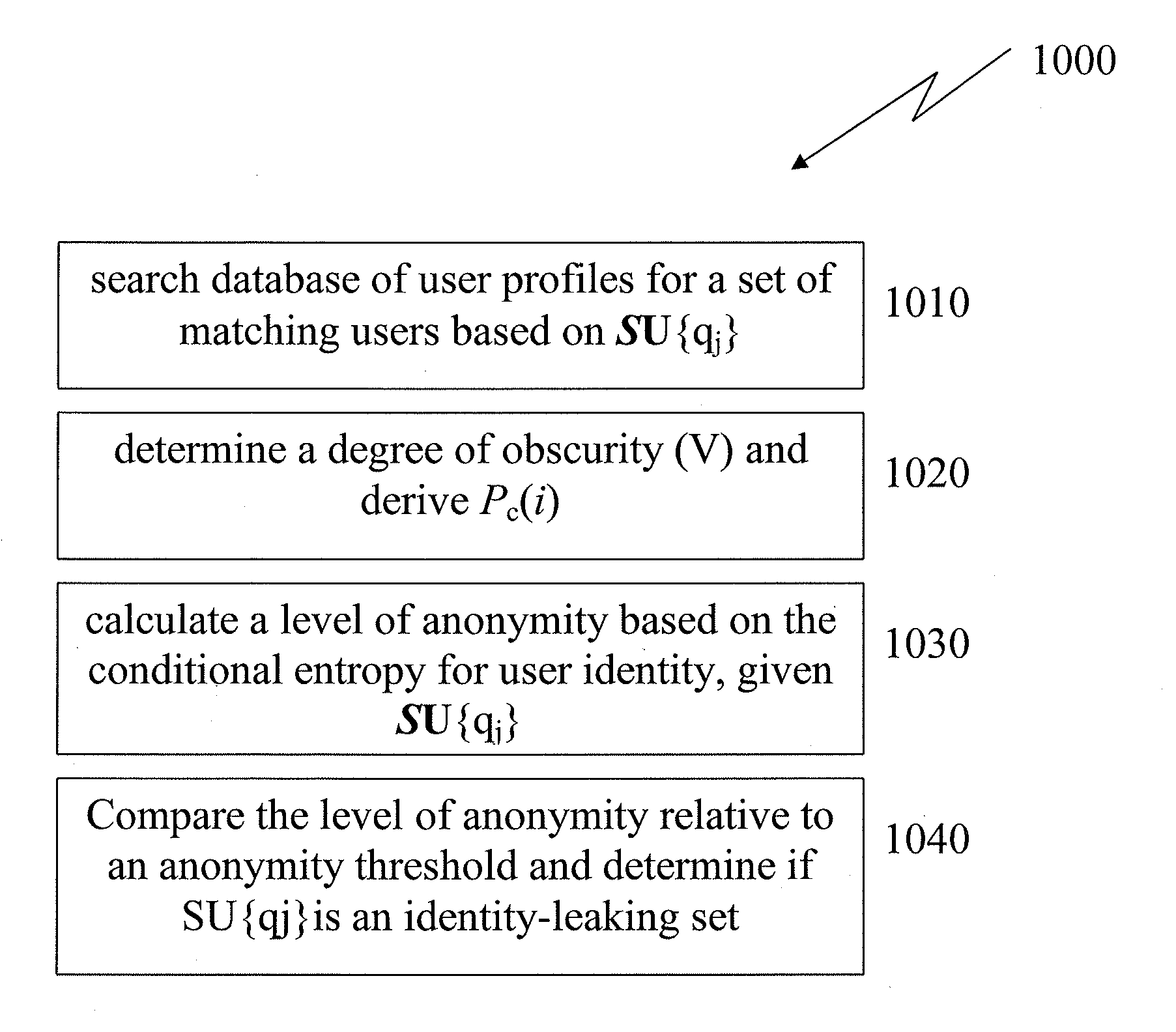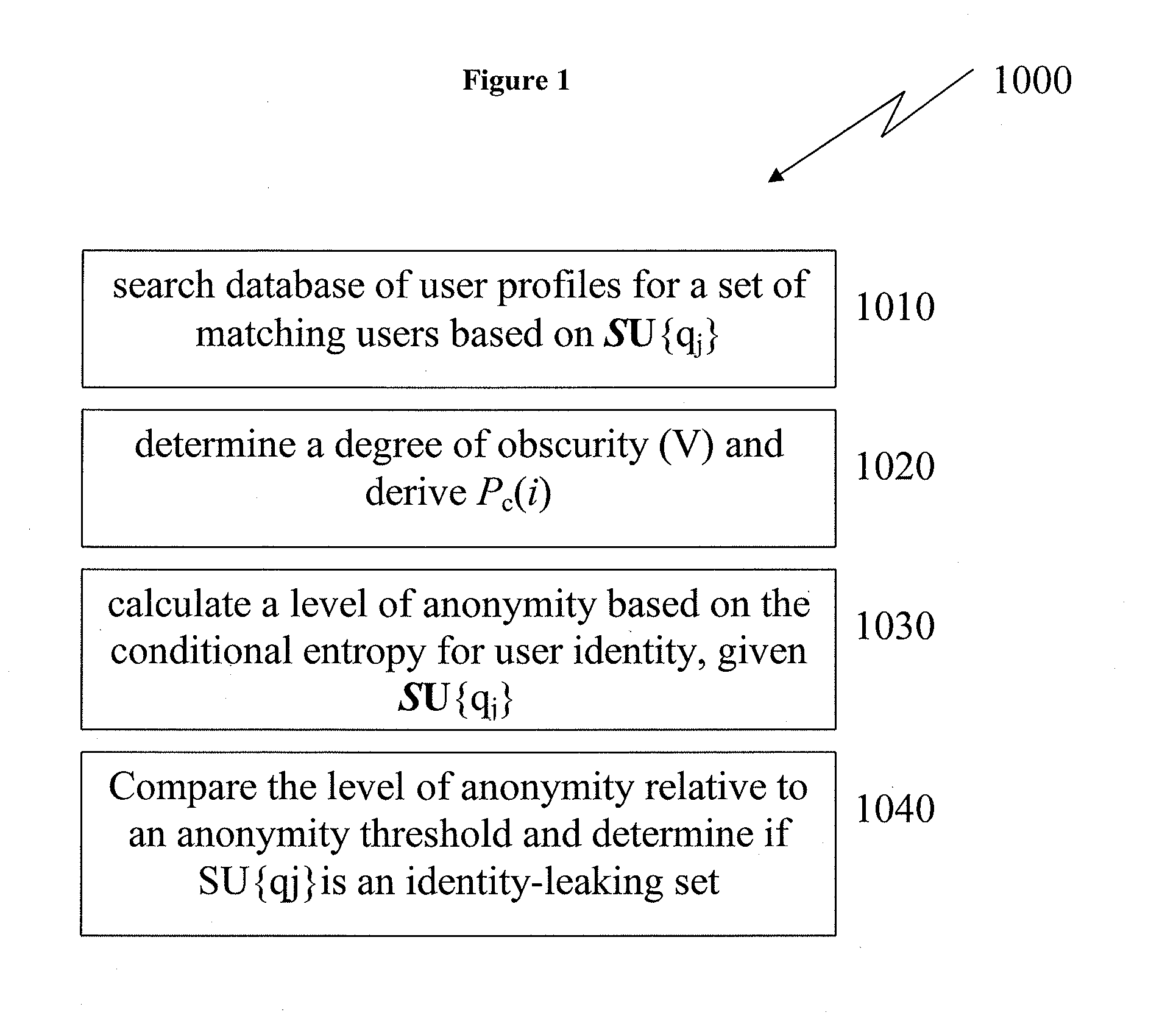Systems and Methods For Anonymity Protection
an anonymity protection and anonymity technology, applied in the field of anonymity protection, can solve the problems of ignoring probabilistic data, insufficient identity protection, and current solutions that fail to identify identity-leaking attributes, etc., and achieve the effect of determining the anonymity level of the user
- Summary
- Abstract
- Description
- Claims
- Application Information
AI Technical Summary
Benefits of technology
Problems solved by technology
Method used
Image
Examples
Embodiment Construction
[0034]To assist those of ordinary skill in the art in making and using the disclosed systems and methods, reference is made to the appended figures, wherein:
[0035]FIG. 1 depicts an exemplary brute force algorithm for determining user anonymity, according to the present disclosure.
[0036]FIG. 2 depicts an exemplary algorithm incorporating complexity reduction techniques for determining user anonymity, according to the present disclosure.
[0037]FIG. 3 depicts a data structure for storing a list of values for a given attribute, according to the present disclosure.
[0038]FIG. 4 depicts average queuing delay and average communicative duration for a multi-user synchronous computer mediated communication system, according to the present disclosure.
[0039]FIG. 5 depicts average of total delay for determining the risk of a revelation in a communication as impacted by the average number of users of the system and session duration.
[0040]FIG. 6 depicts a block flow diagram of an exemplary computing...
PUM
 Login to View More
Login to View More Abstract
Description
Claims
Application Information
 Login to View More
Login to View More - R&D
- Intellectual Property
- Life Sciences
- Materials
- Tech Scout
- Unparalleled Data Quality
- Higher Quality Content
- 60% Fewer Hallucinations
Browse by: Latest US Patents, China's latest patents, Technical Efficacy Thesaurus, Application Domain, Technology Topic, Popular Technical Reports.
© 2025 PatSnap. All rights reserved.Legal|Privacy policy|Modern Slavery Act Transparency Statement|Sitemap|About US| Contact US: help@patsnap.com



